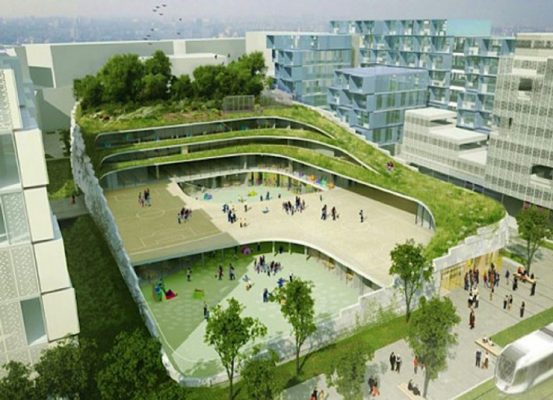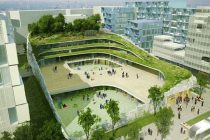Principles 2-4 of the Building Biology Principles concern Community Planning:
- Place dwellings so occupants are undisturbed by sources of man-made air, soil, water, noise and electro-pollution.
- Place dwellings in well-planned communities that provide ample access to fresh air, sunshine and nature.
- Plan homes and developments considering the needs of community, families and individuals of all ages.
You can download this fact sheet by clicking here.
How do we reconcile human health and ecological living in our cities today with the challenges of air, land and water pollution, the automobile, social problems, and zoning restrictions?
How do we define and create “well-planned” communities?
How can we meet the needs of community, families and individuals of all ages?
In Building Biology, we use nature as the gold standard. By this we mean that we try to emulate the conditions that exist in nature to enhance life. In nature the key to success is symbiosis whereby complex systems operate optimally together in a mutually beneficial relationship. In this mutualistic type of relationship, the species in the association gain benefits that exceed the costs. Mutualism fosters harmony by promoting biological fitness of one another. (Reference 1)
In this course we examine exemplary case studies that realize Building Biology criteria for healthier cities. Some of the guidelines that are photographically documented include capturing the essence of character that is unique to a city, and creating vital public spaces. Other examples focus on environmental conditions, such as greening urban areas, managing traffic with a balance of mixed uses, managing rainwater ecologically, and integrating renewable energy and energy reduction into communities.
We conclude this course with the “Peace Treaty” of Friedensreich Hundertwasser. Hunertwasser was the Austrian Architect/artist whose views of mankind, nature and the city reflects the Bau-Biologie philosophy and was much admired by the original founders. His treaty is between man and nature. It holds the solution for the creation of thriving cities of the future.
- We must learn the language of nature, in order to come to an understanding with her.
- We must give territories back to nature that we have wrongly taken and ruined.
- Tolerance for spontaneous vegetation must be developed.
- The creation of mankind and the creation of nature will be reunited. The splitting of these creations has catastrophic results for nature and for mankind.
- Life must be in harmony with the laws of nature.
- We are only guests of nature and must act appropriately
- Mankind is the most dangerous being that has ever plundered the earth
- Mankind must put itself back into its ecological place, so that the Earth can regenerate herself.
Human society must again be one without waste—other than that which is generated by the natural cycles of life.In doing this, one respects the cycle of life and allows the reincarnation of life to occur.
Want to learn more on this issue? Click the comprehensive online course, here below.
References:
(Reference 1) Mutualism – Definition and Examples. (2019, October 7). Biology Online Dictionary. Biology Articles, Tutorials & Dictionary Online


